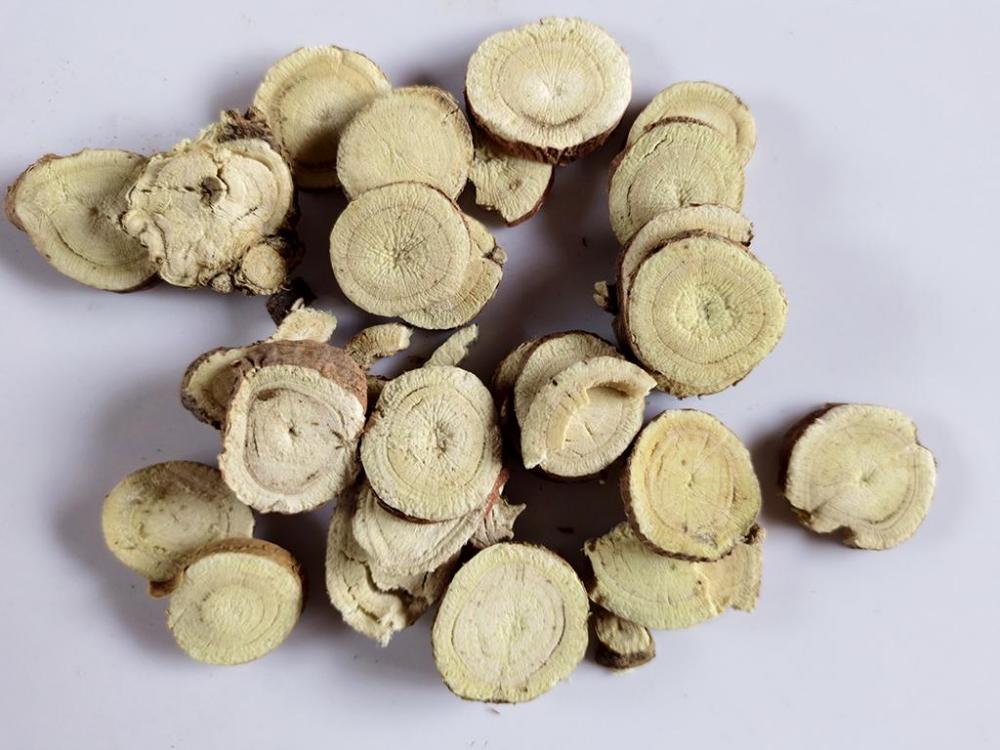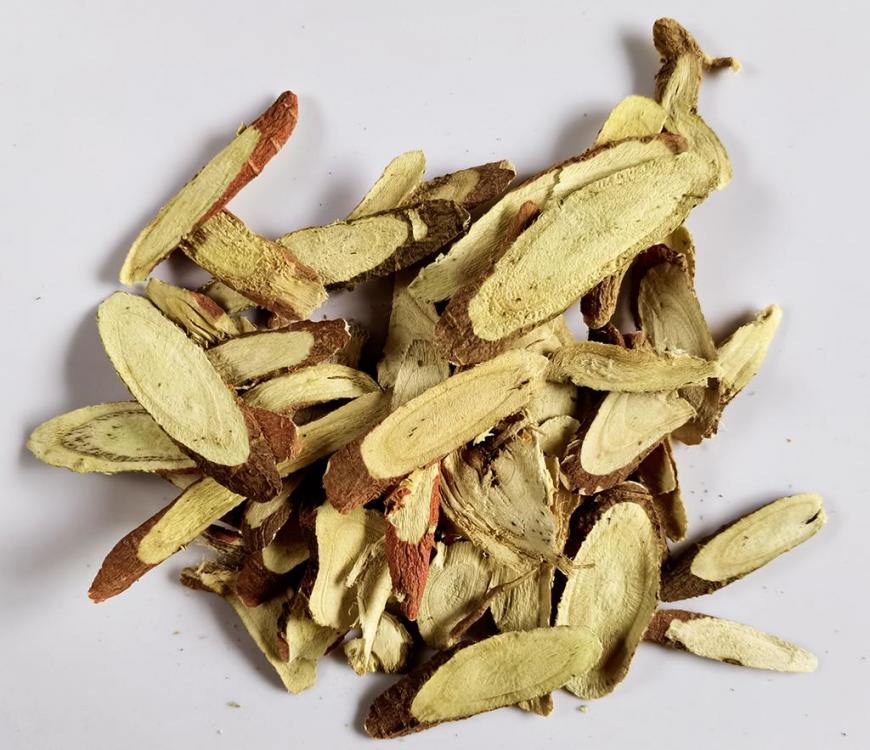8. 甘草 (gān cǎo) – Liquorice / Licorice – Glycyrrhiza glabra / Glycyrrhiza uralensis
甘草 (gān cǎo, literally 'sweet grass') is the root of a leguminous plant containing compounds similar in taste to anise although the two plants are only very distantly related. It is widely used in Chinese confectionery as an “artificial” sweetener. The sweetness comes from glycyrrhizic acid, which is between 30 and 50 times sweeter than sugar. Like most of the herbs and spices mentioned here it is also used extensively in Traditional Chinese Medicine (TCM), particularly in the form of a 'tea' made from the root plus other strange roots and what not.
But it is its use in cooking in which we are interested. These small slices of the root are often added to hot pot broths and to many noodles dishes, including the very popular Lanzhou beef noodles and Liuzhou's signature 螺蛳粉 (luó sī fěn - river snail noodles).
In case you get bored by the cross-sectional cuts, they sometimes slice it laterally.
I rarely use it in my own cooking.





